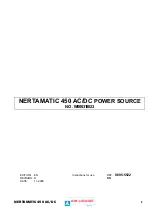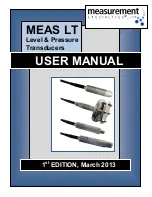
Section 2
Application
2.1
General IED application
SEMOD121007-5 v8
The Intelligent Electronic Device (IED) is designed for the selective, reliable and fast
differential protection of busbars, T-connections and meshed corners in up to 6 zones.
It can be used for protection of single, double and triple busbar with or without transfer
bus, double circuit breaker or breaker-and-a-half stations. The IED is applicable for the
protection of medium voltage (MV), high voltage (HV) and extra high voltage (EHV)
installations at a power system frequency of 50Hz or 60Hz. It can detect all types of
internal phase-to-phase and phase-to-ground faults in solidly grounded or low
impedance grounded power systems, as well as all internal multi-phase faults in
isolated or high-impedance grounded power systems.
Ordering of PT inputs inside of the busbar protection IED will allow integration of
voltage related functionality like under-voltage release, residual over-voltage, power
functions, metering and voltage recording during the faults. However attention shall be
given to the fact that inclusion of PT inputs will reduce number of available CT inputs
(in total 24 analogue inputs are the product limit). Consequently when PT inputs are
ordered the busbar protection IED will be applicable for buses with a fewer number of
bays. Practically the number of available CT inputs will limit the size of the station
which can be protected.
The IED has very low requirements on the main current transformers (that is, CTs) and
no interposing current transformers are necessary. For all applications, it is possible to
include and mix main CTs with 1A and 5A rated secondary current within the same
protection zone. Typically, CTs with up to 10:1 ratio difference can be used within the
same differential protection zone. Adjustment for different main CT ratios is achieved
numerically by a parameter setting.
The numerical, low-impedance differential protection function is designed for fast and
selective protection for faults within protected zone. All connected CT inputs are
provided with a restraint feature. The minimum pick-up value for the differential
current is set to give a suitable sensitivity for all internal faults. The pick-up setting for
the fault current must be less than 80% of the lowest fault current that can occur on the
protected bus bars. If the minimum fault current is high enough, the set value should be
set higher than the maximum load current. This setting is made directly in primary
amperes. The operating slope for the differential operating characteristic is fixed to
53% in the algorithm.
1MRK 505 370-UUS A
Section 2
Application
Busbar protection REB670 2.2 ANSI
35
Application manual
Содержание RELION REB670
Страница 1: ...RELION 670 SERIES Busbar protection REB670 Version 2 2 ANSI Application manual ...
Страница 2: ......
Страница 24: ...18 ...
Страница 40: ...34 ...
Страница 72: ...66 ...
Страница 102: ...96 ...
Страница 266: ...260 ...
Страница 272: ...266 ...
Страница 290: ...284 ...
Страница 432: ...426 ...
Страница 542: ...536 ...
Страница 552: ...546 ...
Страница 553: ...547 ...
















































